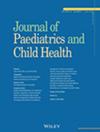A Study of Body Composition in Children Suffering From Infantile Vitamin B12 Deficiency
Abstract
Background
Infantile tremor syndrome (ITS), or neurocutaneous infantile vitamin B12 deficiency syndrome (NIBS), is characterised by tremors, developmental delay, anaemia and skin hyperpigmentation. This study aimed to assess the body composition and serum lipids in children with ITS.
Methods
Children under 2 years of age with a clinical diagnosis of ITS were enrolled. Dietary history, developmental milestones and anthropometric data were recorded, along with blood tests for B12, homocysteine, lipid profile and blood counts.
Results
Of 50 children screened, 31 with a median age of 13 months were included. Most (80.6%) were from lower socio-economic backgrounds. Limb tremors were observed in 51.6%, and all but one child had a developmental quotient (DQ) below 70, indicating significant developmental delays. Microcephaly was present in 35.4%, and moderate to severe anaemia was nearly universal. Growth parameters, including fat mass and fat-free mass, were significantly lower in children with ITS compared to controls. Lipid profiles revealed consistently high triglycerides, low HDL and elevated LDL in most age groups, suggesting a pro-atherogenic metabolic state.
Conclusion
Severe Infantile vitamin B12 deficiency significantly impairs head growth, overall development and body composition, with potential long-term cardiovascular risks due to abnormal lipid profiles.

 求助内容:
求助内容: 应助结果提醒方式:
应助结果提醒方式:


